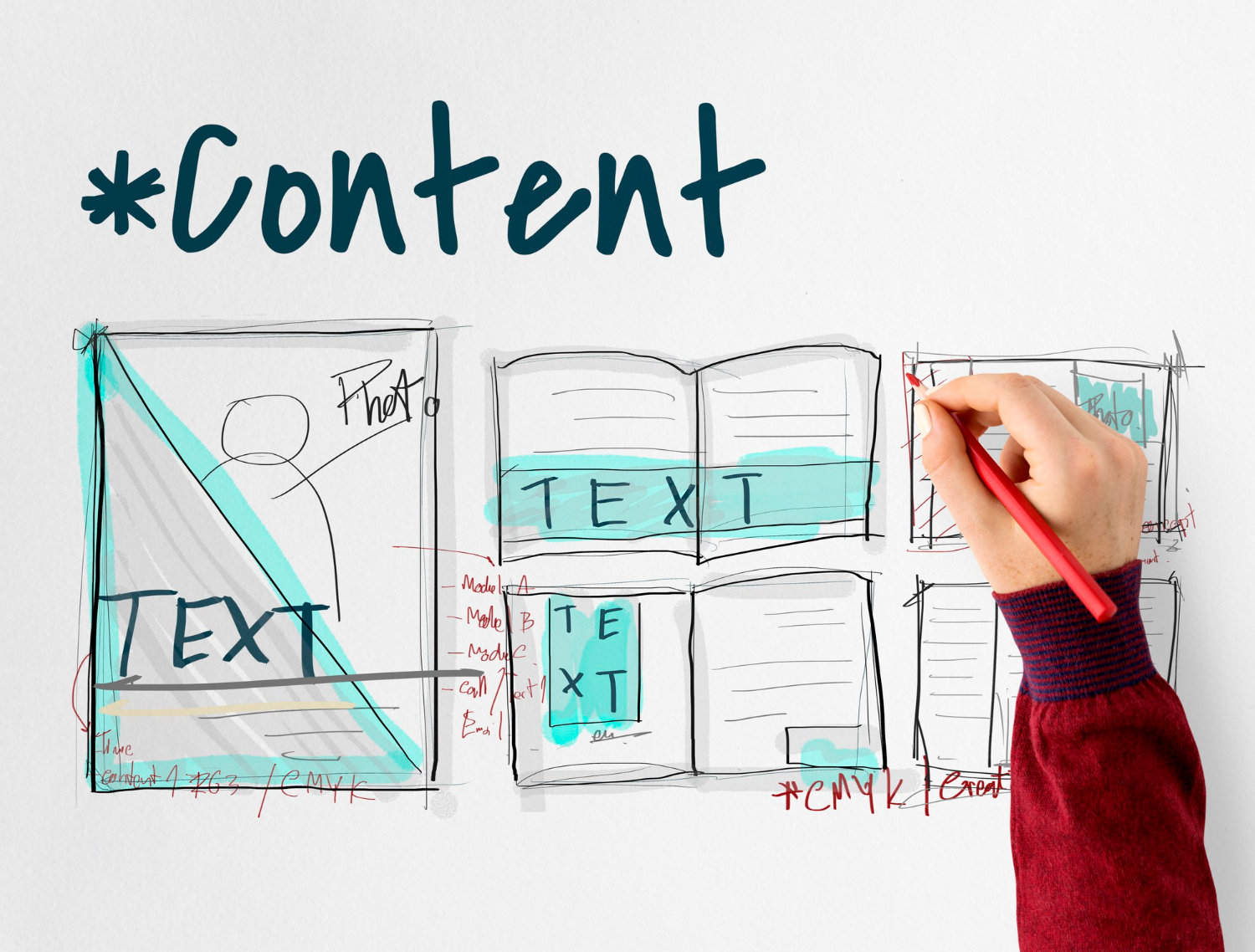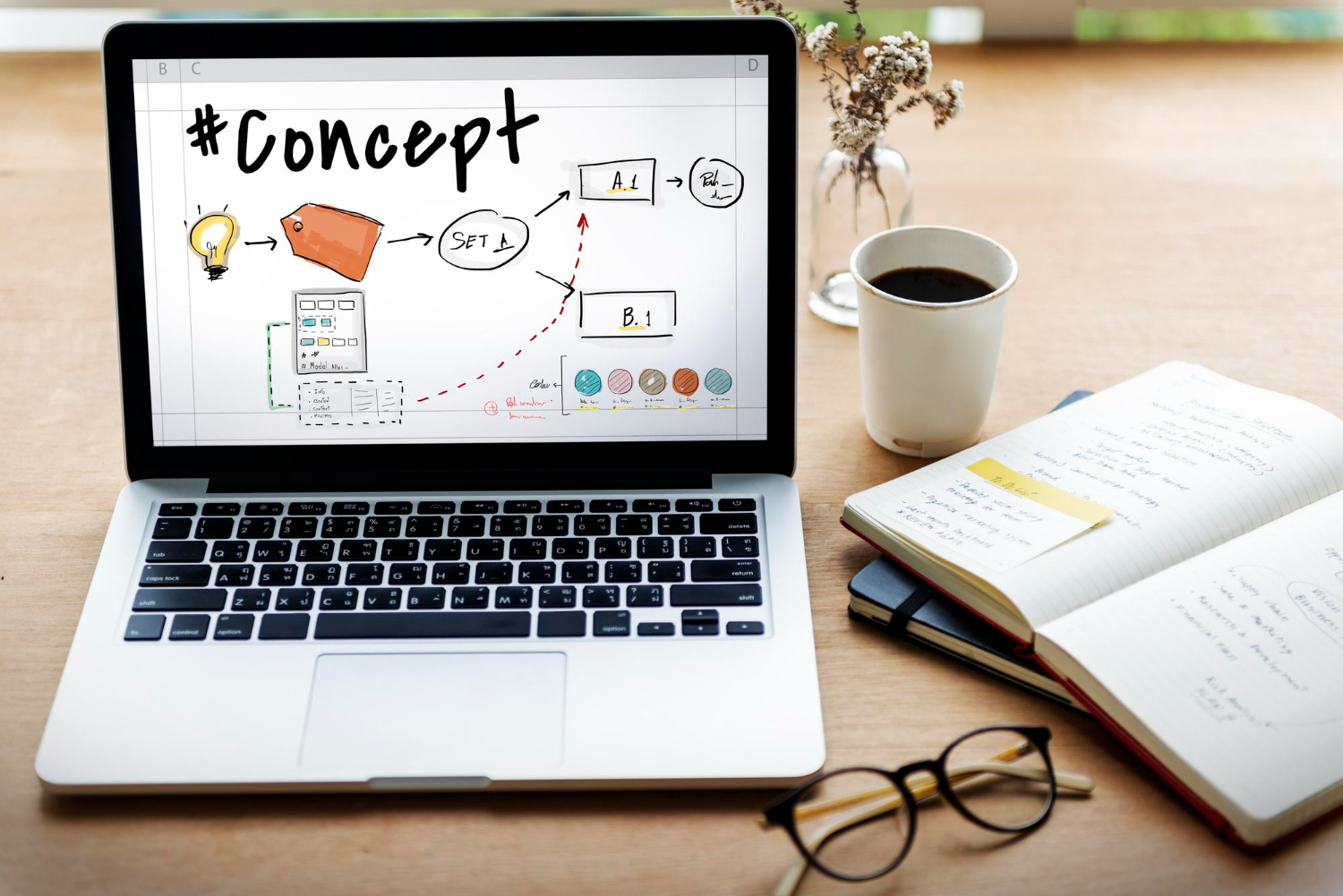Are you looking to optimize your website's performance but unsure if VWO is the right choice? You're in luck! We've compiled...

What is Content Design? (+ 5 Step Checklist That We Use)
Graphic designers, content writers, copywriters, programmers, and web designers are all part of the standard roster for creating and running a website. However, a lot of people forget one crucial member of the dream team to tie it all together--the content designer.
But what is content design? And how does it play into your business' success?
In this article, we’ll go over what content design is and 5 best practices you can implement.
What is Content Design?
Content design is your website's content strategy, including text, images, maps, videos, and other graphics that aim to communicate with your audience.
The goal of content design revolves around understanding user journeys and crafting content that speaks directly to their needs, desires, and pain points.
Content Design vs. UX Writing
In the digital realm, "content design" and "UX writing" are often used interchangeably, but they serve unique roles in improving user experience. While they work towards improving user engagement and satisfaction, each plays a distinct part in this journey.
UX Writing
UX writing is creating the text users encounter while navigating through a website, app, or software. This includes:
- Buttons: The text on call-to-action (CTA) buttons like "Buy Now," "Learn More," or "Sign Up." These few words are powerful enough to guide users towards taking action.
- Error Messages: When something goes wrong, a well-crafted error message can turn a moment of frustration into an opportunity for clarity and even humor.
- Instructions and Guidelines: Simple, direct instructions that help users complete tasks without confusion.
- Form Labels and Navigation Menus: These texts help users understand where to input data and how to move around the site or app efficiently.
Content Design
Content design goes beyond the text on a button or an instruction label. It involves:
- Strategic Content Planning: Determining what content is needed where based on user research and business goals. This includes mapping information so that it's easy for users to find what they're looking for.
- Visual and Interaction Design Integration: Working alongside UI/UX designers to ensure that text, visuals, and layout work harmoniously. Content design considers how content is presented visually and interacts with other elements on the page.
- Content Governance and Consistency: Developing a consistent tone of voice and style across all platforms and pieces of content. This includes everything from blog posts and marketing copy to instructional content and policy information.
- Accessibility and Inclusivity: Ensuring content is accessible to all users, including those with disabilities. This involves following best practices for readability, using inclusive language, and making content understandable for a wide audience.
What Does a Content Designer Do?

Content designers are writers, editors, strategists, and architects all rolled into one. They combine content strategy, journey mapping, marketing, UX writing, and other facets of website optimization to present information most logically and engagingly possible.
Here's a deeper look into what content designers do:
Understand Target Audiences Using Data
Content designers start with data. They sift through analytics, user feedback, and market research to build a comprehensive understanding of their target audience. This process includes:
- Identifying User Needs and Preferences: Understanding what users are looking for, the problems they're trying to solve, and how they prefer to consume content.
- Segmentation: Recognizing that different groups within the audience may have unique needs and tailoring content to suit these different segments.
- Behavior Analysis: Using tools and metrics to track how users interact with content, identifying what captures their attention, what confuses them, and what drives them to take action.
This data-driven approach ensures that content strategies are not based on guesswork but on accurate insights into user behavior and preferences.
Structuring Information for User-Friendliness
Content designers organize information architecture to ensure users can easily navigate digital products. This includes:
- Creating Logical Hierarchies: Ensuring content is organized in a way that makes sense to the user, with clear headings, subheadings, and a logical flow of information.
- Simplifying Complex Information: Breaking down complicated concepts into digestible chunks that users can easily understand and act upon.
- Designing for Accessibility: Making sure content is accessible to everyone, including those with disabilities, by following best practices for readability, using alt text for images, and ensuring compatibility with screen readers.
The goal is to remove any barriers that might prevent users from accessing and understanding the content, enhancing the overall user experience.
Collaborating with UX/UI Designers, Developers, and Marketers
Content designers do not work in isolation; they are part of a multidisciplinary team. Their role involves:
- Bridging the Gap Between Departments: Acting as the connective tissue between UX/UI design, development, and marketing teams to ensure a unified approach to content.
- Incorporating Design and Development Insights: Working closely with designers to ensure that the visual elements complement the content and with developers to understand the technical constraints and possibilities.
- Aligning with Marketing Goals: Ensuring that content aligns with the brand’s voice and marketing objectives, helping to drive brand recognition and loyalty.
This collaborative approach ensures that content is not only well-designed but also strategically aligned with business goals and user needs.
Writing and Editing Content That Drives Action
At the heart of content design is the creation of content itself. Content designers:
- Craft Compelling Narratives: Write content that engages users, tells a story, or conveys information that resonates with the target audience.
- Persuasive Call-to-Actions: Develop clear, compelling CTAs that encourage users to take the desired action.
- Iterate Based on Feedback: Use A/B testing and user feedback to refine and improve the content, ensuring it continues to meet user needs and business objectives.
Good content designers are skilled communicators, adept at translating complex ideas into clear, compelling, and actionable content.
The Role of Content Design in UI and UX
Great content design is the backbone of an effective user interface (UI) and optimized user experience (UX), which, in turn, are essential aspects of a conversion funnel that works.
Both content designers and UI/UX writers contribute to your business' success by:
Seamless Navigation
One of the primary goals of content design is to ensure that users can find what they're looking for with minimal effort. Content designers strategize the organization of information to align with user expectations, using familiar navigation patterns and clear, descriptive labels.
Information Presented In a Simple Way
Content design is crucial in how information is laid out on a page, contributing significantly to a logical flow that users can easily follow. Content designers prioritize hierarchy and structure by using headings, subheadings, bullet points, and paragraphs effectively to create a hierarchy that guides the user's eye through the content logically.
Context matters, too. Content designers create solutions ensuring content is presented in context, with related information grouped and advanced concepts built upon foundational knowledge. This structured approach not only aids comprehension but also enhances the overall usability of the digital product.
Maintaining Brand Voice Consistency
A consistent brand voice across all platforms is vital for building trust and recognition. Content design ensures that every text reflects the brand's personality and values, from the homepage to the error messages.
The content designers' process will create designs while keeping brand identity in mind. A unique, consistent voice helps establish a strong brand identity that users can relate to and remember. Furthermore, when the brand voice is consistent, it creates a seamless experience for users across different platforms and touchpoints, reinforcing the brand’s message and values.
Content designers work closely with brand teams to encapsulate and express the brand’s essence through every word on the digital platform.
Increasing Engagement and Conversion Rates
At its heart, content design is about creating engaging experiences that drive users to take the desired action. This involves developing content that captures interest and encourages users to engage more deeply with the product, whether through reading, sharing, or exploring.
Similar to copywriters and content writers, a content designer will design CTAs that are compelling and easy to find, guiding users toward conversion points like purchases, sign-ups, or downloads.
By focusing on engagement, content designers play a direct role in improving key metrics like dwell time, bounce rates, and conversion rates.
Top 5 Content Design Best Practices

You can tell your content design is great if it resonates with your target audience. But just like any other aspect of website optimization, creating an effective content design strategy is not that easy.
That said, here are our top five content design best practices to help you get started:
- Start with User Research: Understanding your audience is the foundation of effective content design. Conduct thorough user research to gain insights into your users' needs, preferences, and behaviors. This can include customer surveys, interviews, user testing, and analysis of user data.
- Embrace Clarity and Simplicity: In content design, less is often more. Use clear, concise language that your audience can easily understand. Especially avoid industry jargon.
- Maintain Consistency Across All Platforms: Consistency in tone, style, and formatting is key to building trust and familiarity with your audience.
- Utilize Visuals Purposefully: Visuals are a powerful tool in content design, capable of conveying complex information quickly and effectively.
- Iterate Based on Feedback and Testing: The digital landscape is ever-evolving, and so should your content design. Regularly test your content’s effectiveness through A/B testing, user feedback, and UX analysis.
How Can Web Analytics Help Optimize Content Design?

As you can see, content design is not exactly a straightforward process. It requires efficient collaboration across multiple teams and constant analysis to anticipate user needs. Additionally, your branding must be solid from the get-go to ensure your strategies remain consistent.
With all that in mind, how can you make the content design process easier?
Web analytics is the go-to solution for many web design processes and something you should always have in your toolbelt. It can streamline your content design strategy by:
- Identifying High-Performing Content: User behavior analytics tools track various metrics that help identify which pieces of content are most engaging to your audience. Metrics such as page views, time spent on a page, and social shares offer clear indicators of content that resonate.
- Spotting User Experience Issues: One of the most valuable aspects of web analytics is its ability to highlight potential website issues. High bounce rates, for example, can indicate that a page isn’t meeting users' expectations, perhaps due to irrelevant content or poor design.
- Segmenting Audience Interaction: Different segments of your audience may interact with your content in distinct ways. Web analytics allows you to segment your audience based on various criteria, which can reveal valuable insights into how different groups prefer to consume content, what topics they find most engaging, and how they navigate your site.
- Making Data-Driven Decisions: Instead of relying on intuition or general best practices, content designers can use analytics to understand what works and what doesn’t for their specific audience.
Refine Your Content Design Strategy with FullSession
Web analytics provide a window into the user's experience and offer actionable insights that can drive significant improvements in content design.
With an effective web analytics tool like FullSession, your content designers won't have to rely on intuition or third-party data. You get direct access to valuable metrics and powerful tools like:
- Interactive Heat Maps: FullSession's website heat map shows you which elements are getting clicks and which ones are getting no attention, helping your content designers strive for an engaging and intuitive user interface.
- Session Recordings: Content designers need to know how your audience is interacting with your user interface. Session recording and replay show you exactly how visitors use your website, which can tell you where the frustration points are.
- Customer Feedback Tools: FullSession lets you integrate tools that collect instant feedback from your web visitors. Content designers can use this feedback to optimize the user's journey and minimize funnel drops.
FullSession Pricing Plans

Here are more details on each plan.
- The Starter plan costs $39/month or $32/year and allows you to monitor up to 5,000 monthly sessions with up to 6 months of data storage.
- The Business plan costs $75/month or $60/year and helps you to track and analyze up to 100,000 monthly sessions with up to 12 months of data storage.
- The Enterprise plan has custom pricing and offers customizable sessions plus full access to all features.
Install A Better UX Analytics Tool Today
It takes less than 5 minutes to set up your first website or app with FullSession, and it's completely free!
FAQs About Content Design
Can good content design improve SEO rankings?
Absolutely! By improving user engagement and reducing bounce rates, content design can positively impact your SEO efforts.
Is content design only important for digital products?
While it's crucial for digital platforms, the principles of content design apply to any medium where information needs to be effectively communicated.
How often should I update my content design?
Regular reviews are key. The digital landscape changes rapidly, so staying on top of user feedback and the latest trends is essential.




